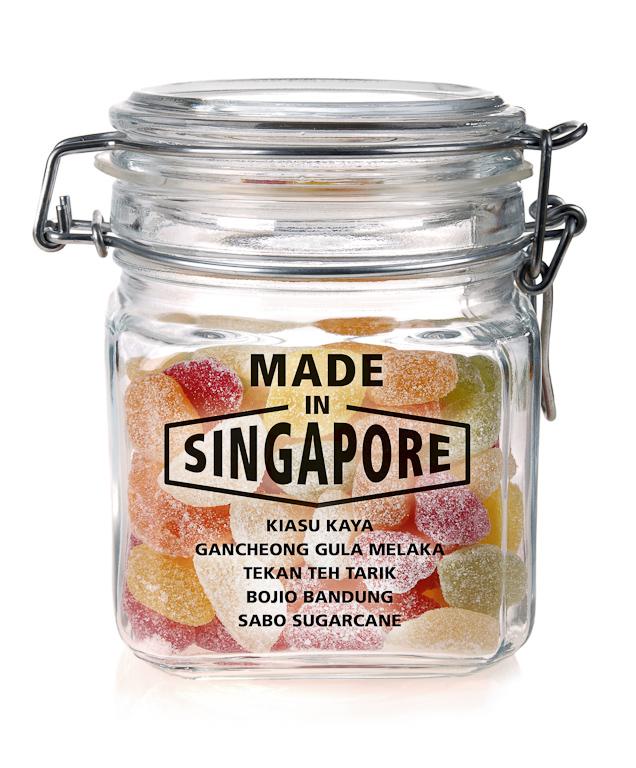Ideas for made-in-Singapore inventions

Remember when you first learned to play a new sport or game? Share your most memorable moment when picking up a new sport.
Send us your stories at psd_challenge@psd.gov.sg.
The winning entry will receive an attractive prize worth up to $100. All other published entries will win vouchers worth $30 each. Please include your name, agency email address, agency and contact number.
All entries should reach us by March 31, 2015.

Debbie Teo,
MOE
I say we start producing a line of sweet pastilles (not unlike Bertie Bott’s Every Flavour Beans in the Harry Potter series) to remind our overseas Singaporeans of home. It will be a box of sweets that they can carry in their pockets anywhere in the world, and a lovely gift worthy of all our foreign friends who don’t know what or where Singapore is, too! The available flavours can come in the following tongue-in-cheek alliterative flavours: Kiasu Kaya, Gancheong Gula Melaka, Tekan Teh Tarik, Bojio Bandung, Sabo Sugarcane. Five flavours for SG50! Plus a limited edition savoury Buay Tahan Belacan – bound to make everyone around the world remember Singapore’s heat!
Congratulations, Debbie, you win a $100 voucher from The Little Dröm Store. Shop quirky, locally designed knick-knacks to your heart’s content!
Fu Peng Mun,
HSA
A made-in-Singapore product should be unique, with a “taste” of Singapore. I envision it to be a Singlish translation mobile app. The app should be available worldwide to promote Singapore’s unique language, with voice recording and recognition functions so that users can input Singlish words via voice recording and have their speech (or text) translated into standard English. There could also be a function to add new Singlish words and translations.
Clement Png,
SLA
My idea is a laptop bag that can be converted into an office jacket. The reason? Most office staff are issued with a laptop, which they might have to carry to other work locations or back home. Some air-conditioned environments can get quite cold, and needing to bring an additional jacket around would take up space and weight. Therefore a prototype that can be used to carry a laptop and be worn as an office jacket would be cool.
Melvin Seah,
SPS
I propose a mobile app game set in the 1960s that spans 50 years. The app’s concept is similar to that of Tamagotchi and role-playing games. The player has to care for a young Singaporean character (which represents the user). During this time, the player can experience the 1960s games that children used to play in kampongs, via in-app games; play at going to school, getting a job and performing at work (how much the player cares for the character will affect the character’s grades and qualifications); find a spouse (to understand Singapore’s past two-child policy); get a home (to understand Singapore’s housing loan laws); go to the hospital after falling ill (to better understand MediSave or MediShield), and finally, retire and collect CPF payouts (to learn how CPF works). Different choices will lead the user to different storylines and outcomes, and allow him to know what should be done to achieve that dream.
Way Kai Wei,
PUB
My idea is called the “Red Packet”. There has been a greater use of magnetic cards such as EZ-Link cards and employee passes. However, when these cards are kept together in wallets, their magnetic flux normally interferes with one another and causes errors. Thus the card to be used must be removed from the wallet before it can be tapped on the card reader. Solution: The “Red Packet”, a card holder that allows all the cards’ individual magnetic signatures to be retained, such that a card reader can detect the appropriate card.
Daniel Quek
ITE
My idea is a new game called the True Blue Singaporean Pastime. It is a board game with all kinds of Singapore-based food fare, from the hawker centres' variety to the upmarket restaurants, etc. It is easy to play and set up. The objective of the game is to bring people together and have an appreciation for our local food.
How to play:- Players will start off with zero Makan points. They will move along the spaces on the board based on the number shown on one die thrown.
-
There will be “winners” and “bloopers” for players to have fun while they go on a gastronomic journey in Singapore.
For example:
- For the first round, they gain two Makan points if they can identify the food item in the square.
- Lose five Makan points if they land on a Food Trap space.
- Gain five Makan points if they land on a Food Treasure space.
- For the second round, they gain two bonus Makan points if they can correctly tell the calories of each local dish. This will make the game more educational.
- If they exceed the caloric count for a normal-weight man or woman or a 10-year old child, then deduct three points (calorie list and food plate diagram will be provided).
- The winner will be the one with the most Makan points after two rounds.
List of some of the Singaporean food that can be mentioned in the game:
- Durian
- Char Kway Tiao
- Laksa
- Kueh Lapis
- Singapore Sling
- Chilli Crab
- Ice Kacang
- Chendol
- You Tiao
- Satay
- Mee siam
- Roti Prata
- Nasi Lemak
- Mee Goreng
- Rendang
- Fish Ball Mee
- Murtabak
- Nasi Goreng
- Hainanese chicken rice
- Yong tau foo
- POSTED ON
Mar 1, 2015
-
Deep Dive
1. Innovation: Innovate or Die









